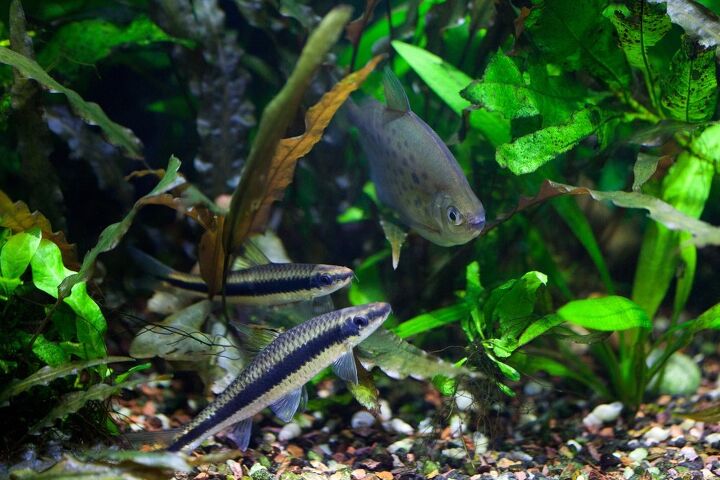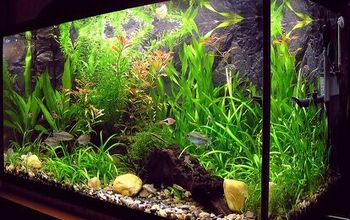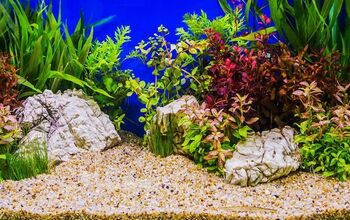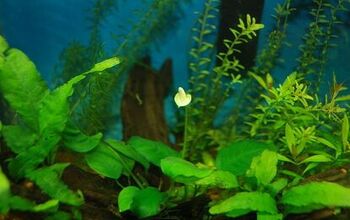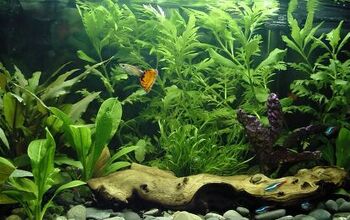Best Aquarium Substrates for Planted Tanks

What’s at the bottom of the best aquariums? The best substrates! Here’s our list of the best aquarium substrates for planted tanks.
If you were to stroll down the aquarium aisle at your local pet store, you would eventually come to the substrate section. In many pet stores, this section consists primarily of shelves stocked with different types and colors of aquarium sand and gravel. These two substrates are beginner-friendly and, depending on the color, can help you cultivate a natural appearance in your tank. If you’re cultivating a planted tank, however, they may not be enough.
Aquarium plants can be a great addition to your tank. Not only do they add an element of natural décor, but they actually help improve the water quality in your tank by absorbing excess carbon dioxide and converting it into the oxygen your fish need to thrive. Just like any living thing, however, aquarium plants need certain nutrients to thrive and that means choosing the right substrate.
Aquarium substrate comes in many different forms, so take the time to learn about the different options before you make your choice. You may even choose more than one! Read on to learn what to look for in substrate for planted tanks and to see our top 10 picks.
The Best Planted Tank Substrates
Different types of aquarium substrate provide different nutrients, and some are designed to be used in combination with other substrates. Before you choose the right substrate for your tank, take the time to review your options to find the best possible combination to meet your tank’s unique requirements.
Here are our top picks for the best aquarium substrate for planted tanks:
CaribSea Eco-Complete
Easily one of the top substrates for planted tank, this substrate contains both major and minor trace elements to nourish aquarium plants. It encourages healthy plant root growth and it contains water conditioning solution for maximum benefits.
Seachem Fluorite
An all-natural porous clay for planted tanks, fluorite can be rinsed right in the bag and never needs to be replaced for the life of your aquarium. Plus, it won’t alter the pH of your tank water and can be used alone or with gravel.
ADA Aqua Soil Amazonia
Aquarium soil gives your planted tank a natural appearance and provides plants with the optimal medium to spread roots. This soil is rich in organic elements and helps modulate the pH and water hardness in your tank.
Fluval Plant and Shrimp Stratum
Comprised of rich volcanic soil, this substrate stimulates strong plant growth and helps promote a neutral to slightly acidic pH. It is ideal for planted tanks but works well for aquatic shrimp as well.
Aqua Aquarium Soil Substrate
If you’re looking for a long-lasting substrate, this soil works for 12 to 18 months and it has the added benefit of prolonging water exchange periods.
UP Aqua Sand for Aquatic Plants
Slightly heavier than aquarium soil, this aqua sand is very attractive and has the added benefits of holding pH at 6.5 and doesn’t need to be rinsed.
Seachem Fluorite Black Clay Gravel
This black clay gravel is made from specially fracted stable porous clay and designed specifically for planted tanks. It doesn’t require the use of any other substrate or gravel, and it lasts for the life of your aquarium.
T. International Aqua Soil
This aquatic soil is formulated with special ingredients that nourish aquatic plants as well as shrimp, crayfish, and snails. It is designed for long-term use.
CaribSea Flora-Max Sand
If you want your tank to have a natural look like the ocean floor of the beautiful Caribbean than you will love CaribSea Aquatics substrate. This is 40 pounds of live sand from the Caribbean that is using a patent pending technology called Sea Breathe. Sea Breathe keeps the live sand with its original bacteria so the sand is alive with up to 1000 times more beneficial bacterial for your personal ocean. The high count of natural beneficial bacterial means no noxious build up of metabolic by-products in your tank.
Brightwell Aquatics FlorinBase
This laterin substrate consists of fine, high-porosity, kiln-fired clay granules. It is designed to be used as a base layer in planted tanks above laterite powder, though it can also be used as a top layer.
What to Look for in Substrate for Planted Tanks
In a fish-only tank, aquarium substrate serves the primary purpose of covering the tank bottom and improving aesthetics. As such, there is no need for anything very expensive, so most hobbyists choose something simple like aquarium gravel or sand. For planted tanks, however, substrate needs to provide a rooting medium for plants and should deliver some nutrients as well.
Here are some things to look for in planted tank substrate:
- Complete substrate. This type of substrate is generally best for root feeders because it contains a variety of nutrients for many plant types.
- Weight and volume. Some substrates are heavier than others, so take time to learn whether the substrate can be used on its own or if it has to be topped with gravel to weigh it down.
- pH and chemistry. Some substrates (like crushed coral) have the capacity to change the pH in your tank or to affect other aspects of water chemistry, so be careful.
- Easy to use. Many substrates can be used right out of the bag after a quick rinse while others take a bit more time to prepare – read the instructions before adding it so you do it right.
In addition to learning the basics about different types of planted tank substrate, you need to think about the types of plants you want to keep before you buy. Some plants get their nutrients from the water column (like floating plants) and others need to be rooted. Decide what plants you want to keep before you start shopping for substrate so you can make a smart choice.
As you start shopping for aquarium substrate for your planted tank, you may start to wonder whether there really is a “best” option. The thing to realize is that every tank is unique, so you’ll need to make your choice based on your tank parameters. Keep in mind as well that many planted tanks do best with a combination of different substrates.
So, when you’re ready to start shopping, take what you’ve learned here and put it to use in making a smart decision for your planted tank.

Kate Barrington is the loving owner of two cats (Bagel and Munchkin) and a noisy herd of guinea pigs. Having grown up with golden retrievers, Kate has a great deal of experience with dogs but labels herself a lover of all pets. Having received a Bachelor's degree in English, Kate has combined her love for pets and her passion for writing to create her own freelance writing business, specializing in the pet niche.
More by Kate Barrington



